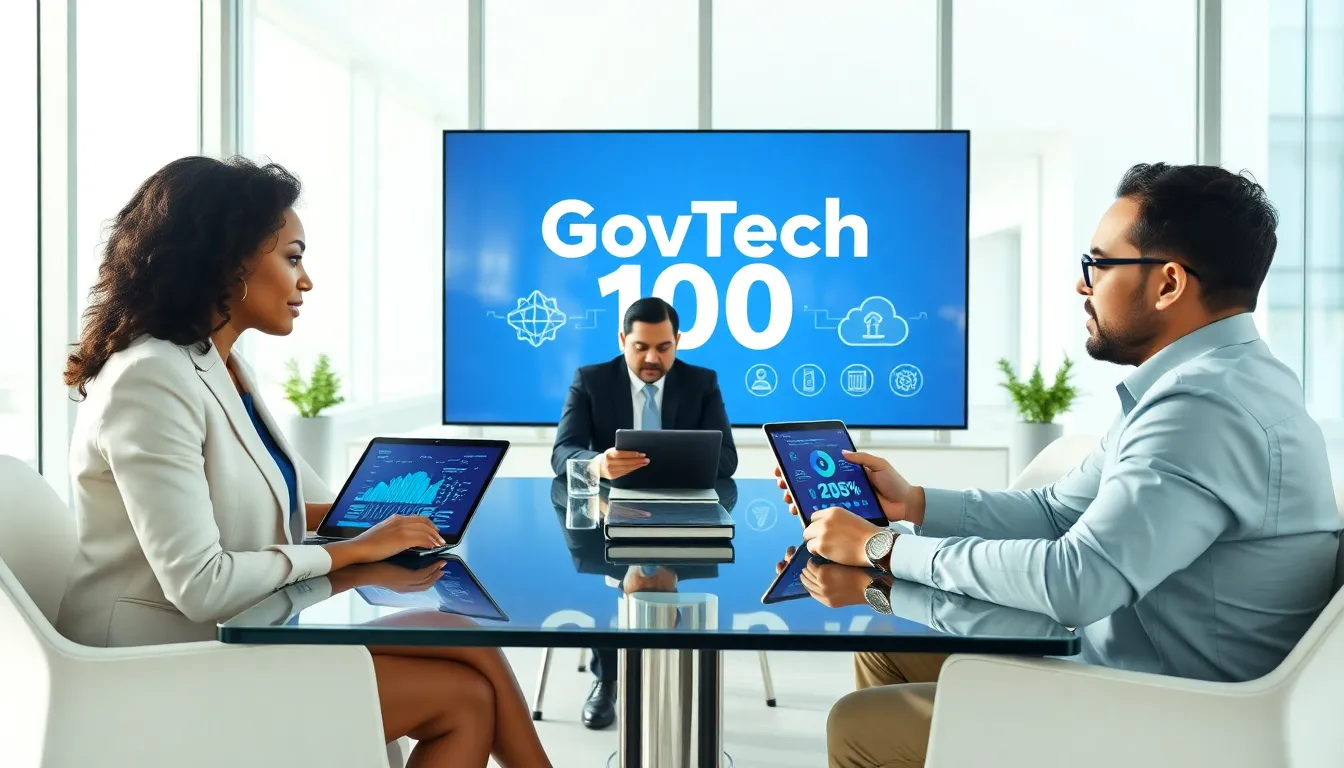In the vast expanse of government and technology, a fresh wave is surging forward, GovTech. If you’ve ever found yourself wondering how to make government offices more efficient, transparent, and perhaps a little less bureaucratic, then you’re already acquainted with the power of GovTech. The GovTech 100 brings together the brightest stars lighting the way to a more connected and effective government. Buckle up because we’re diving into how these trailblazers are reshaping our public sector, one innovative solution at a time.
Table of Contents
ToggleWhat Is GovTech?

GovTech, short for governmental technology, refers to the wide array of technological solutions and services designed specifically to improve public sector operations. It encompasses everything from software solutions that optimize workflow to platforms that enhance citizen engagement. In essence, GovTech is about utilizing technology to streamline processes, reduce waste, and enhance accountability in government. Think of it as giving government a much-needed makeover that emphasizes efficiency and transparency.
It represents a pivotal shift in how governments operate, moving away from traditional bureaucratic models. Instead, they’re embracing innovative technologies to meet the needs of their constituents better. From data analytics and cloud computing to blockchain and AI, GovTech applies cutting-edge technologies to tackle longstanding governmental challenges.
The Importance of GovTech in Modern Governance
The significance of GovTech in today’s governance landscape cannot be overstated. As society increasingly demands more from their governments, the pressure mounts on public sector entities to adapt and evolve. This is where GovTech steps in, acting as the bridge between outdated systems and the modern expectations of citizens.
Modern governance seeks to be more responsive and data-driven. So, solutions that enhance communication channels and improve data accessibility are crucial. Citizens no longer accept opaque government processes: they demand transparency and ease of access to information. GovTech fulfills this need by enabling better collaboration between government agencies and citizens, eventually fostering a more participatory democracy.
Also, during crises, such as the COVID-19 pandemic, GovTech proved invaluable. Rapid developments in telehealth services, online voting systems, and contact tracing applications showcased how technology could drive quick, effective responses in emergencies.
Overview of the GovTech 100 List
The GovTech 100 list is a prestigious annual ranking that highlights the most innovative and impactful companies in the GovTech sector. Compiled by a diverse panel of experts, the list identifies firms that are making significant strides in transforming public service through technology.
These companies are recognized for various factors: innovation, impact on citizen engagement, and the ability to solve pressing governmental issues. From platforms that help civic engagement to tools that automate administrative tasks, the GovTech 100 showcases a spectrum of technologies reshaping how government operates.
For instance, some companies on the list specialize in enhancing public safety through advanced data analytics, while others focus on improving infrastructure with smart city technologies. The breadth of the field underscores a shared commitment to making government more efficient, transparent, and accessible.
Key Trends in GovTech Innovations
Several key trends are emerging in the GovTech arena, reflecting the evolving needs of both governments and citizens.
Spotlight on Notable GovTech Companies
One significant trend is the rise of data-driven decision making. As more governments invest in data analytics, tools that help well-informed choice-making become crucial. Companies like CityBase are enhancing service delivery by providing data insights directly impacting public services.
Another trend involves increasing citizen engagement through tech solutions. Platforms that enable two-way communication between citizens and governmental bodies are gaining traction. Consider the likes of Nextdoor, which connects neighbors, evolving to include local government interactions to foster communication and community engagement.
The integration of artificial intelligence is also monumental. AI tools help in predictive analytics, which allow governments to anticipate issues such as traffic congestion or resource allocation needs. With solutions like ClearGov, transparency and accountability become part of everyday government affairs.
Challenges Facing GovTech Companies
While the potential of GovTech is immense, companies within the sector face a unique set of challenges. One of the primary hurdles is navigating the regulatory landscape, which can vary greatly from one jurisdiction to another. This complexity often creates barriers to entry for innovative solutions.
Also, budget constraints in many municipalities mean that even the most promising technologies can struggle to gain traction. Governments may be hesitant to invest in cutting-edge solutions without first seeing demonstrated benefits, creating a chicken-and-egg scenario for new GovTech startups.
Also, issues related to data privacy and security are paramount. As public sector organizations embrace new technologies, ensuring the protection of sensitive citizen information becomes a top priority. Any breaches can undermine public trust, making it crucial for GovTech companies to build robust security measures into their offerings.
Future of GovTech: Opportunities and Predictions
Looking ahead, the future of GovTech is brimming with opportunities. As governments continue adapting to a digital-first mindset, the demand for innovative solutions is expected to grow. The proliferation of remote work due to events like the pandemic has set a precedent for more flexible public service frameworks, new technologies that support this shift are likely to see increased adoption.
Besides, the ongoing push for greater transparency and civic engagement will drive growth in tools that help open data sharing and citizen participation. Solutions that feature user-friendly interfaces and accessibility will be front and center, as they cater to a diverse public audience.
Predictions also point toward the expansion of partnerships between GovTech firms and traditional tech companies, fostering a collaborative environment that enhances innovation. By combining strengths, these partnerships can yield solutions that are both cutting-edge and practical, eventually benefiting society at large.








